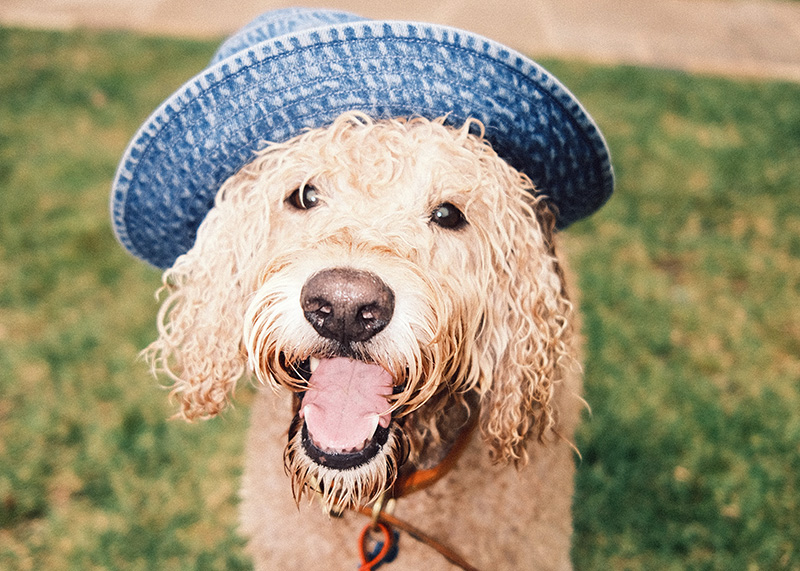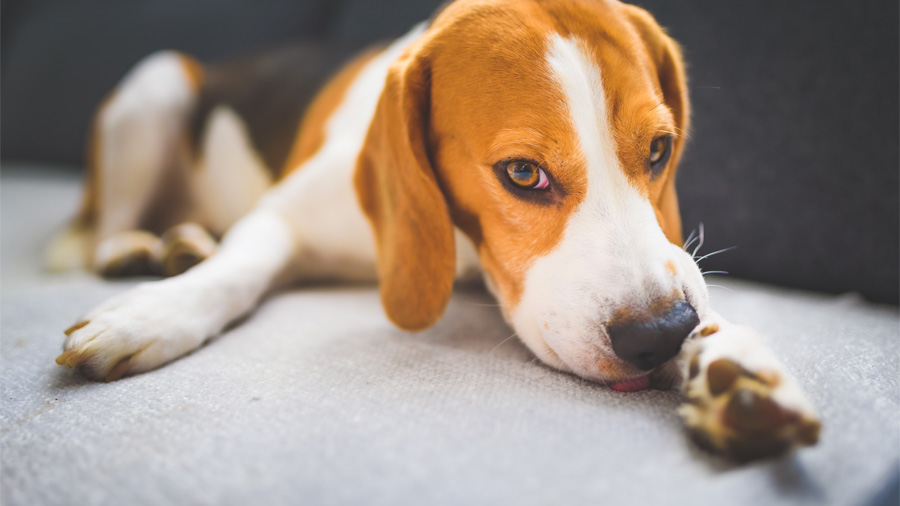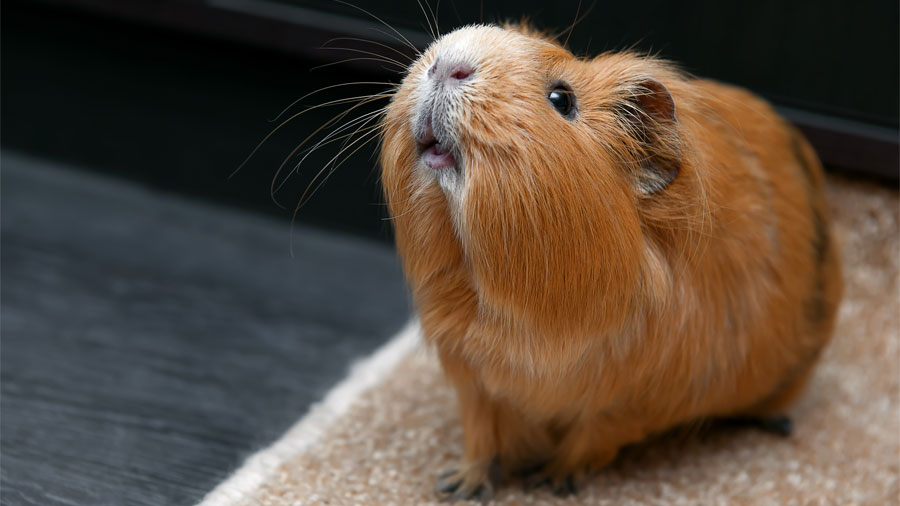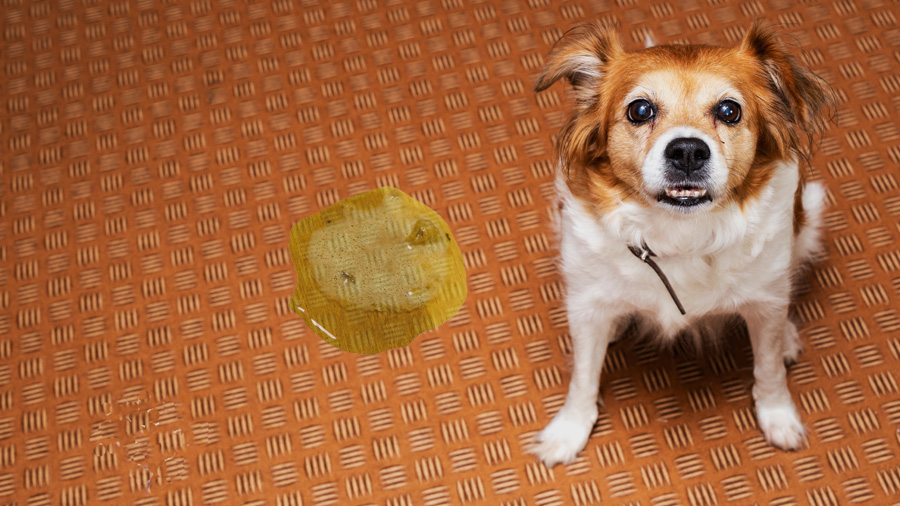What kind of “hat” is designed for your pet’s mouth? The “COHAT,” of course!
COHAT stands for comprehensive oral health assessment and treatment. Misty Croy, a certified veterinary technician with the dentistry and oral surgery service at the University of Illinois Veterinary Teaching Hospital in Urbana, explains what this means and why it’s an important part of caring for your dog or cat.
What Can Go Wrong in Your Pet’s Mouth
According to Croy, oral health problems arise when bacteria destroy the supporting structures of the teeth (periodontal disease) or when a disease process affects the inside of the tooth (endodontic disease).
The structures that hold the teeth in are the periodontal ligaments (which attach the teeth to the bone), bone, and gingiva (gums). When 50% or more of the bone supporting a tooth is lost, the tooth needs to be extracted.
The inside of the tooth contains the pulp, which is the vital or living part of the tooth. Damage to this part is most commonly caused by tooth fractures or tooth trauma. When the pulp is damaged, the tooth can become discolored and eventually die. If the pulp is exposed, the tooth needs treatment, either extraction or root canal therapy.
Prevention Is Key
Keeping teeth clean and free from plaque that leads to disease is the best way to avoid periodontal disease. Also, do not allow dogs to chew on toys or bones that you can’t indent with your thumbnail. These are too hard and can lead to endodontic disease.
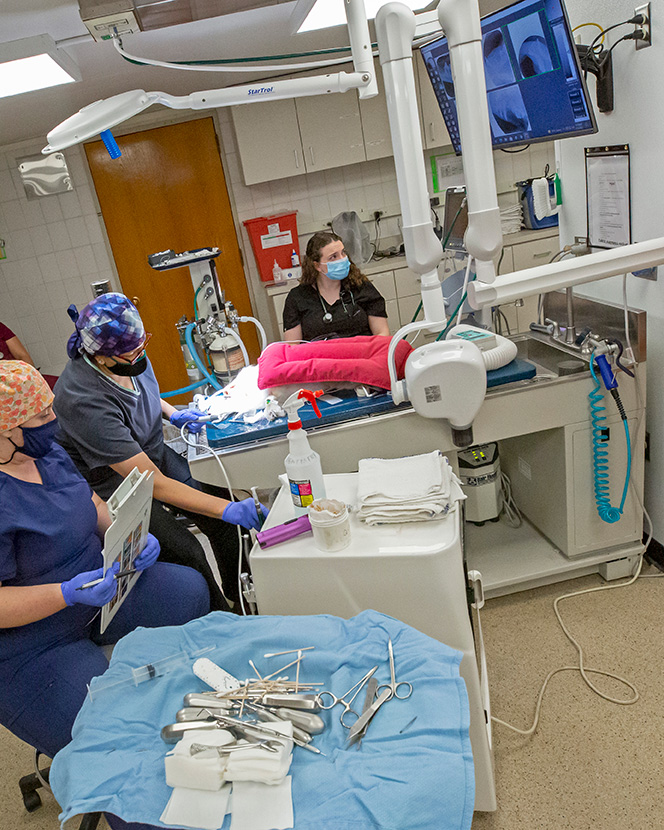
“The phrase ‘dental prophylaxis’ is used in both human and veterinary dentistry to describe professional cleanings. It means that we are intervening before the disease process develops,” says Croy.
Before your pet’s teeth are professionally cleaned, your veterinarian will ask you questions about your pet’s health history, conduct a physical examination, and likely draw blood for lab work. Other diagnostics might be indicated if your pet has heart disease or other health conditions.
These steps are necessary so the veterinarian can determine the safest anesthetic protocol for your pet.
“Anesthesia is needed to conduct the oral exam because our patients do not sit still or allow us to work carefully in their mouths with sharp instruments,” says Croy. Anesthesia is also used when dental x-rays are taken, which requires the patient to be still. In addition, numbing agents are injected in areas that require a procedure that is painful.
The Oral Examination
According to Croy, a thorough oral health assessment looks at all aspects of the mouth. For example, probing the gumline reveals if periodontal disease is present and taking x-rays reveals how much bone loss is present, which determines the stage of periodontal disease.
Other conditions veterinarians check for during an oral exam include:
- Fractured or discolored teeth
- Loose teeth
- Growths or asymmetry of the oral cavity
- Tooth resorption, where the tooth begins to deteriorate
- Receding gums
- Overgrowth of gum tissue around the teeth
After the assessment, which includes dental x-rays, and after any needed treatment has been performed, the veterinarian will remove any plaque and tartar (calcified plaque) from the teeth. The cleaning reaches below the gum line, where periodontal disease arises, using an ultrasonic scaler and hand instruments with sharp tips and edges. The last step involves polishing the teeth.
Tooth Extractions
In veterinary dentistry extraction is often the solution for injured or diseased teeth. After an extraction, your pet will need pain management. You’ll also feed them a soft-food diet for two weeks and keep them from chewing on toys or anything hard while the surgical sites are healing. It is a good idea to have the extraction sites checked by a veterinarian before switching back to the usual diet, treats, and toys.
Sometimes pets need to have all their teeth extracted, and they tend to do very well. There are no long-term effects on their ability to eat, drink, or live normal, happy, healthy lives.
According to Croy, most dogs and cats don’t chew their food anyway but swallow it whole. She notes that when the lower canines are removed, the tongue may tend to hang outside of the mouth. In these cases, the owner may be instructed to moisten the tongue with water every so often to keep it from becoming too dry.
Try This at Home
It’s important to note that preventing dental disease requires more than just regular professional cleanings at the veterinarian’s office. Ideally pet owners will also practice daily tooth brushing for their dog or cat.
The diet the pet eats is another important factor. “Animals that eat wet food as opposed to hard kibble are more prone to extensive periodontal disease,” says Croy. The hard kibble provides an abrasive action that helps remove some plaque when the animal chews. Wet food sticks to the surface, which causes more plaque to form.
In the end, the best way to promote your dog’s or cat’s oral health and prevent dental disease is to combine daily tooth brushing with yearly professional anesthetized dental cleanings.
By Crystal Munguia

